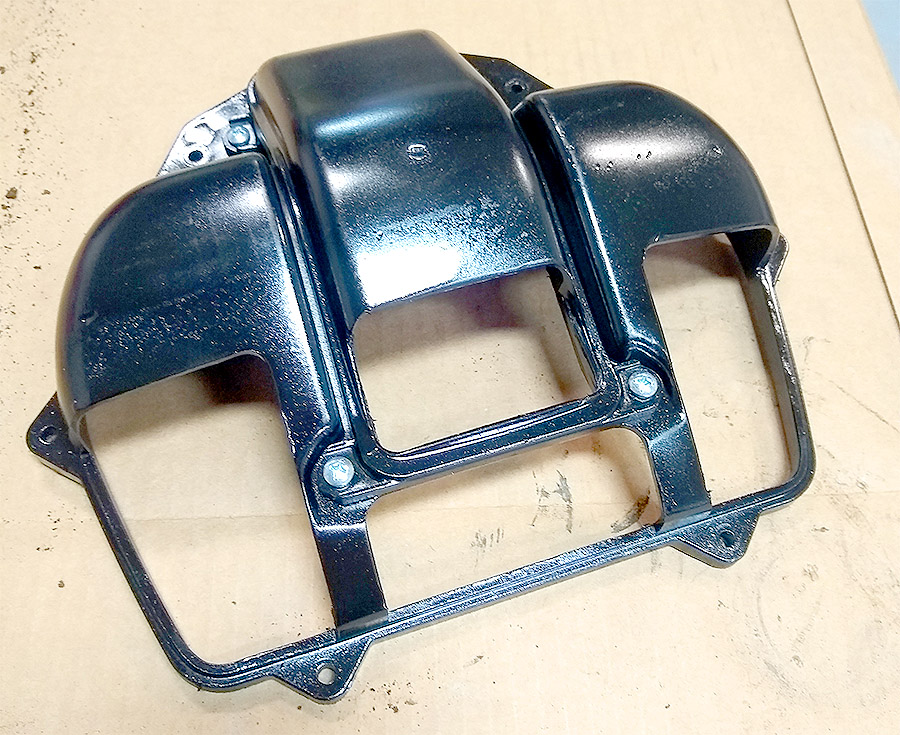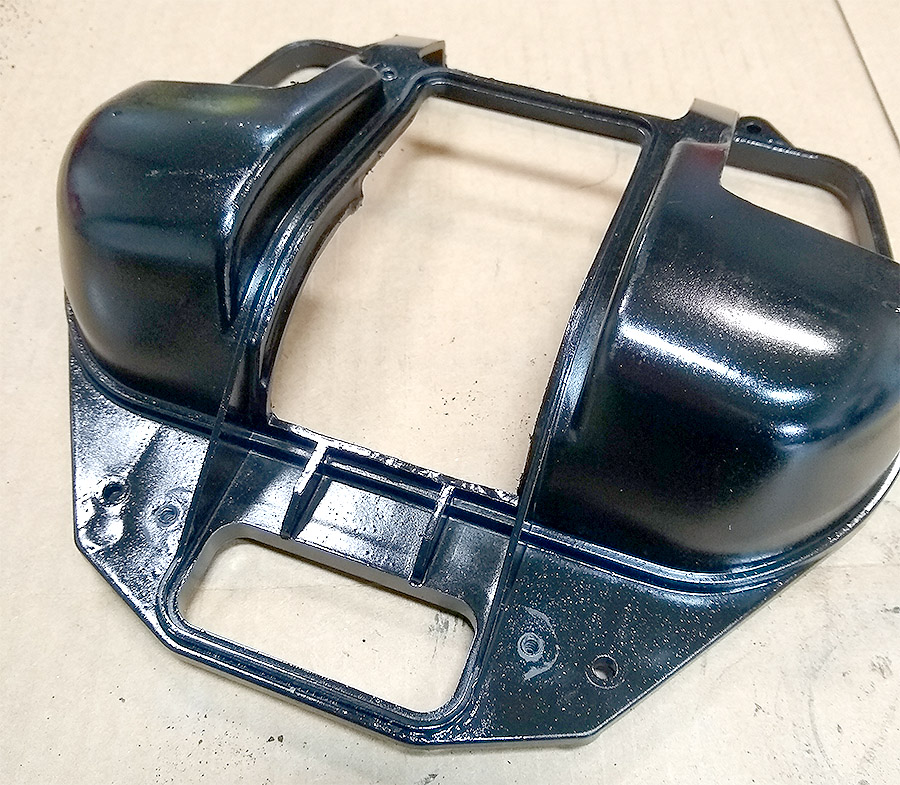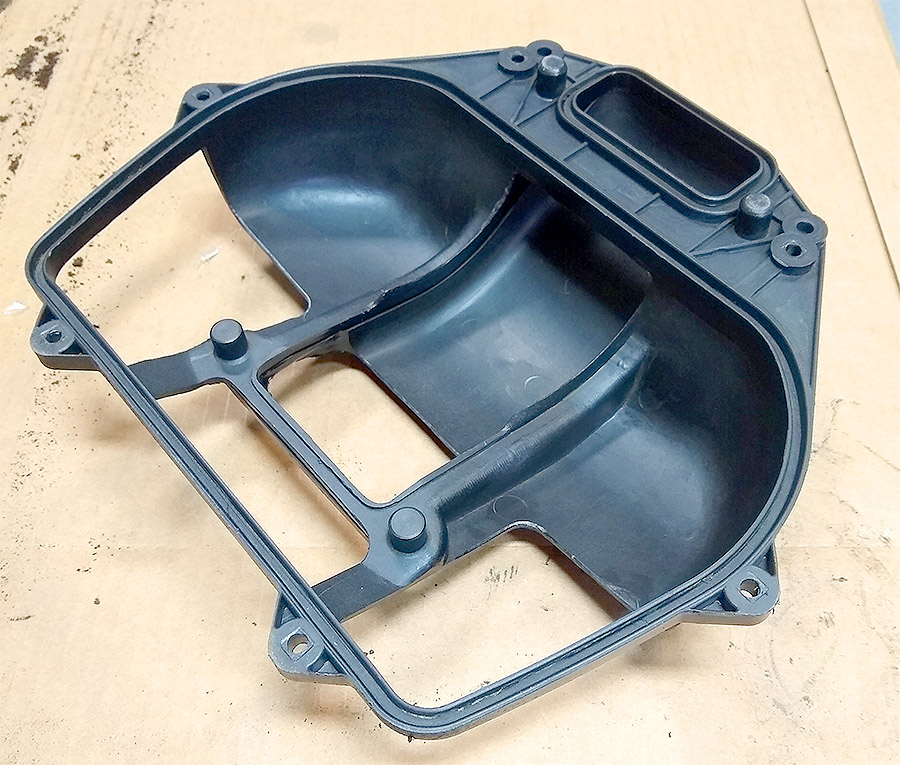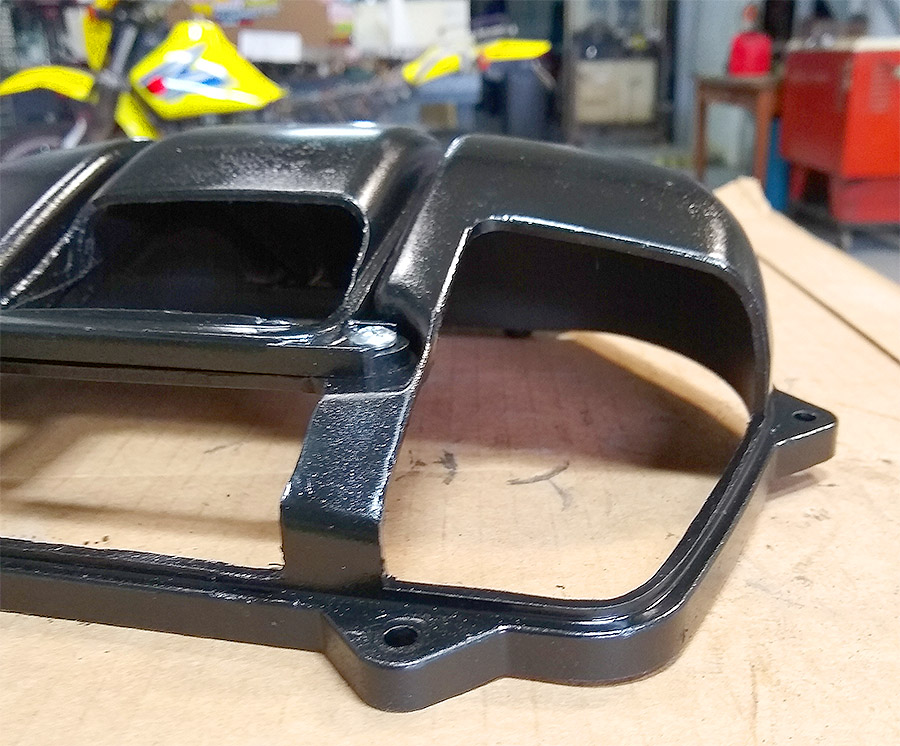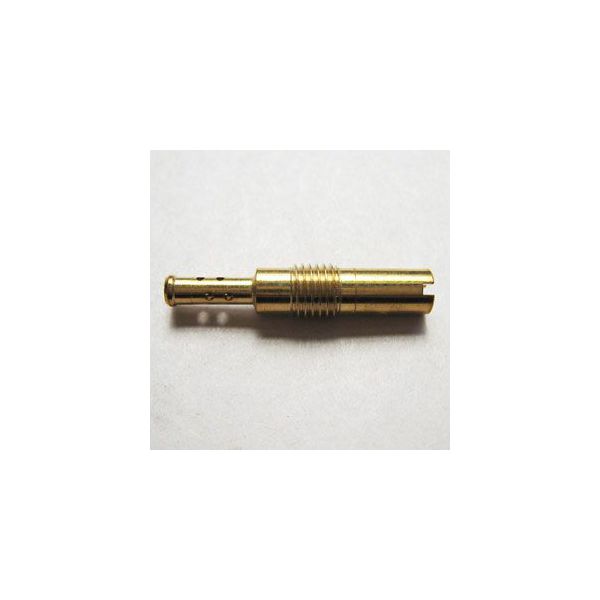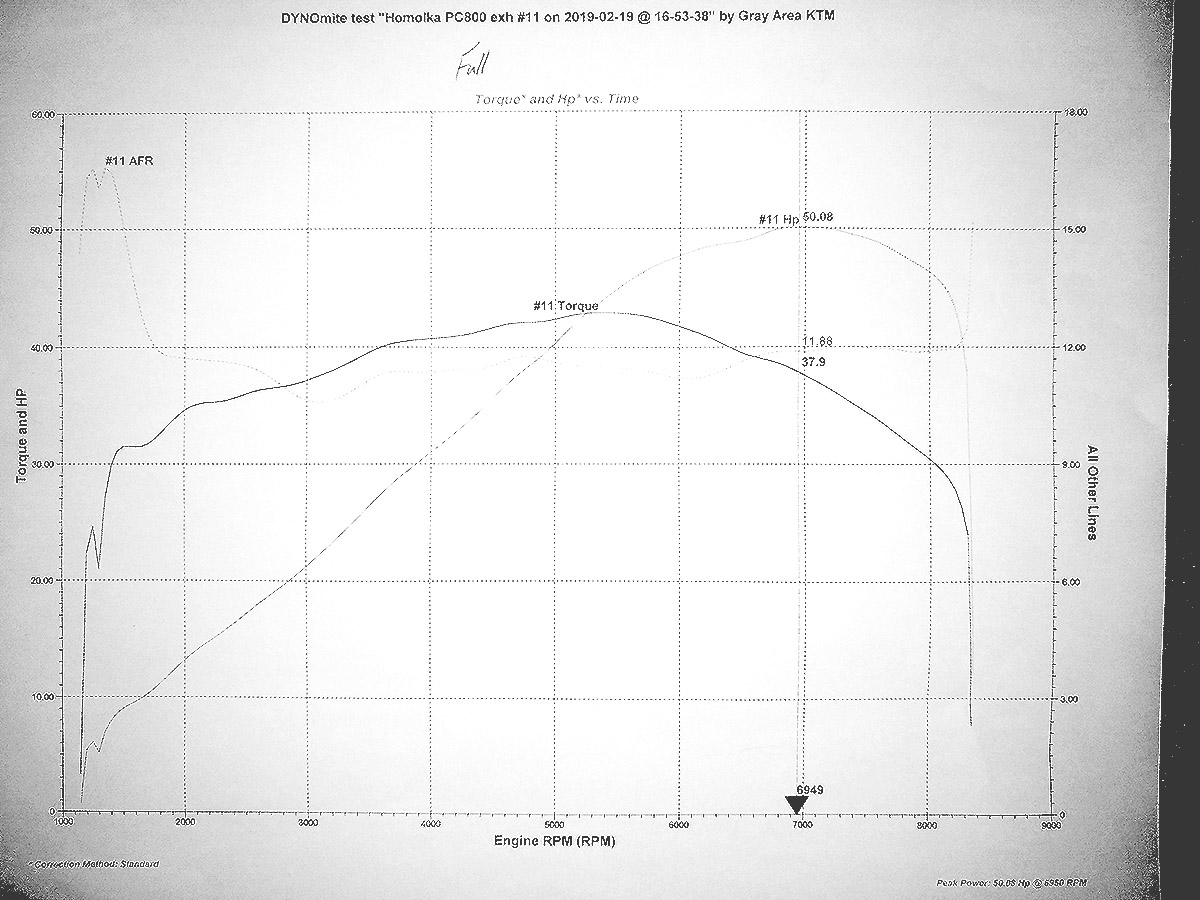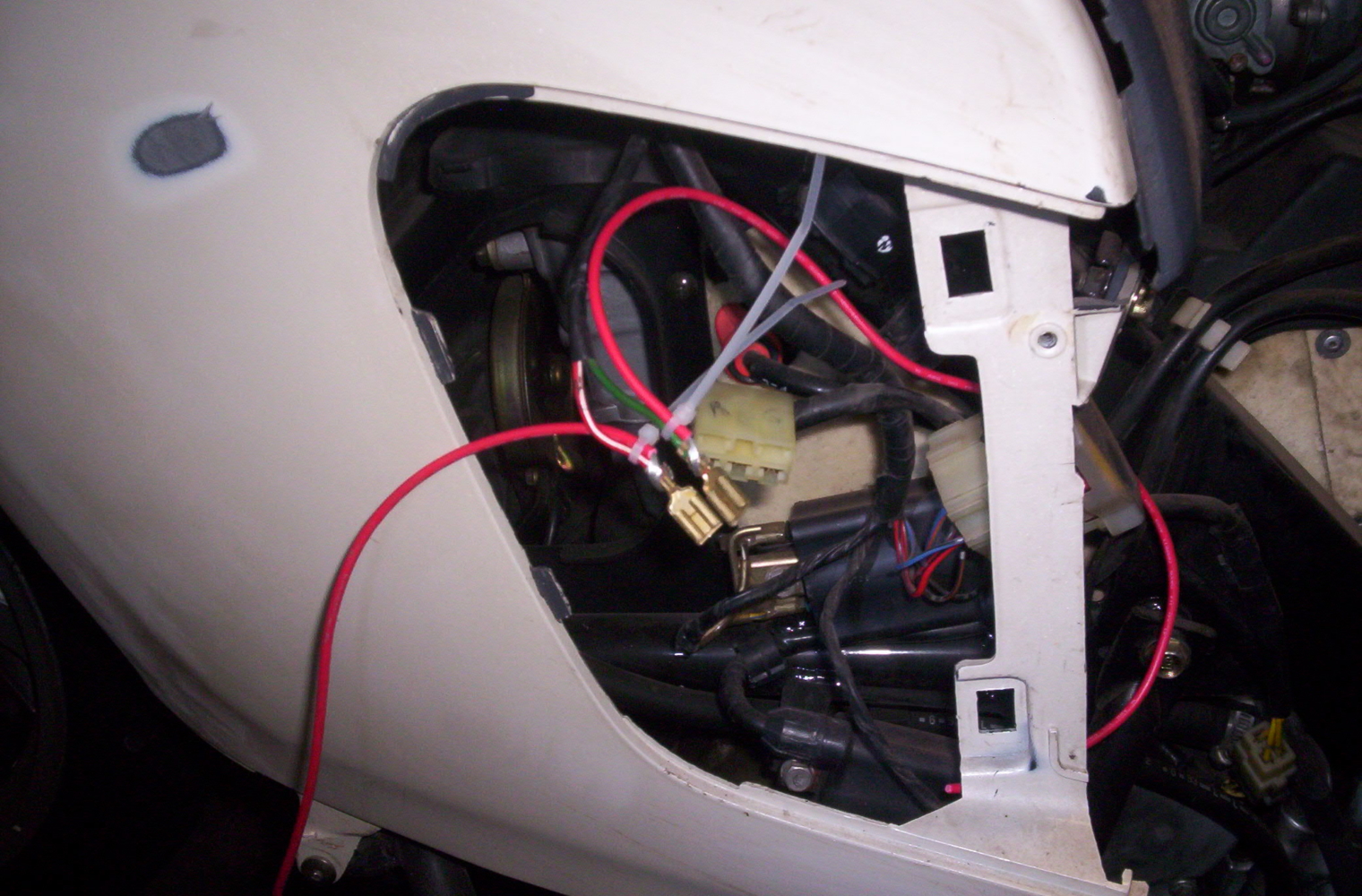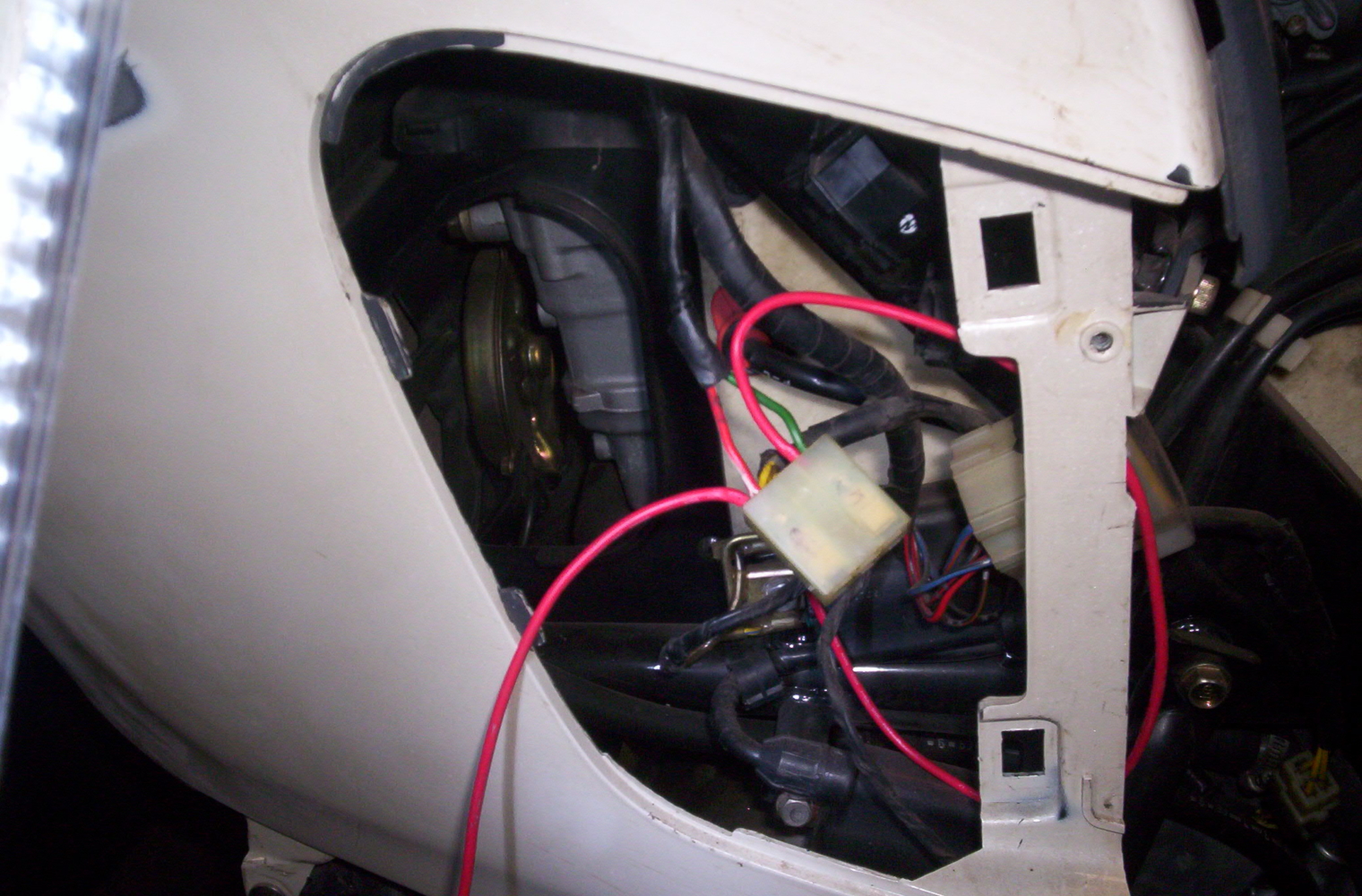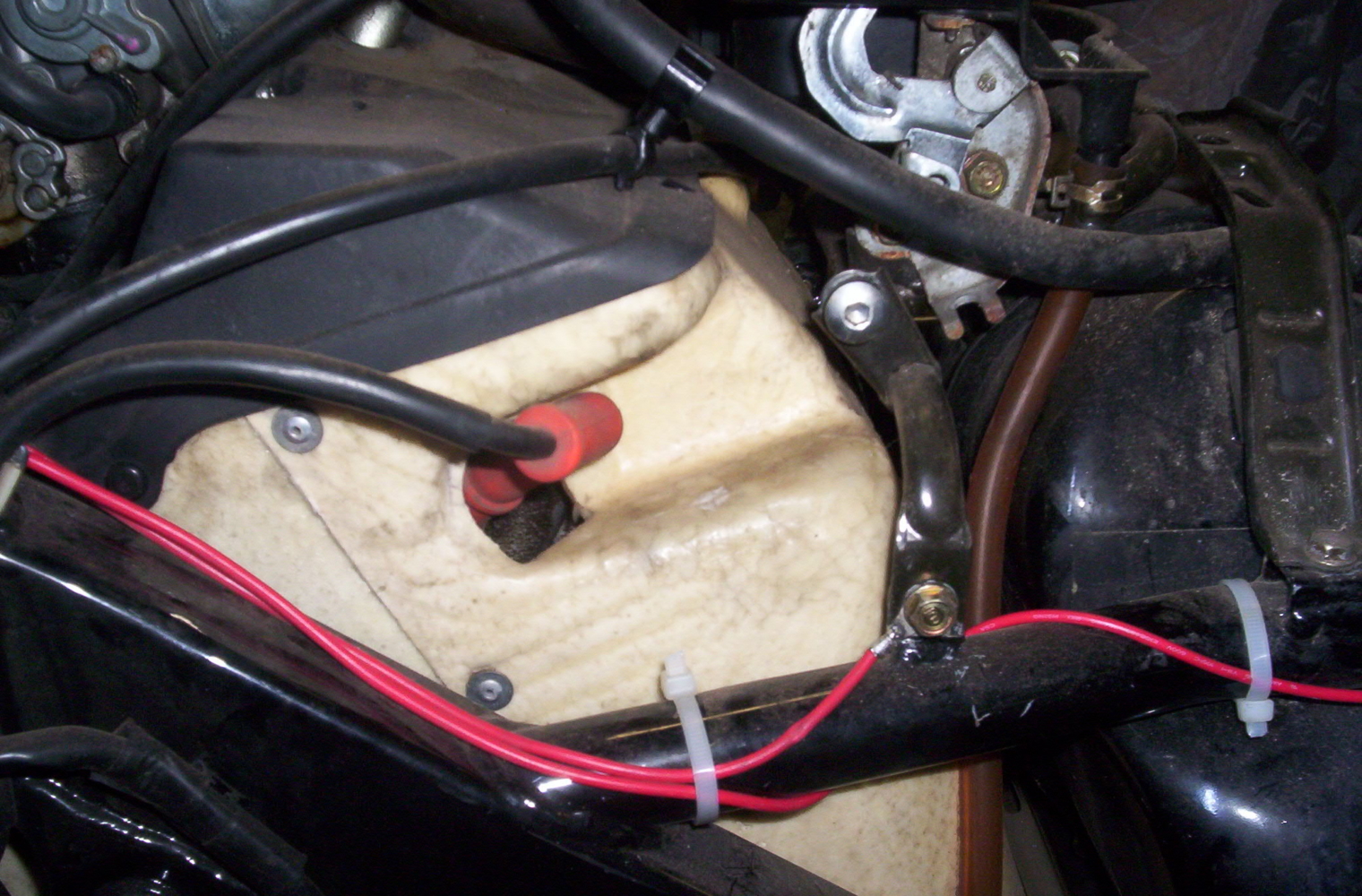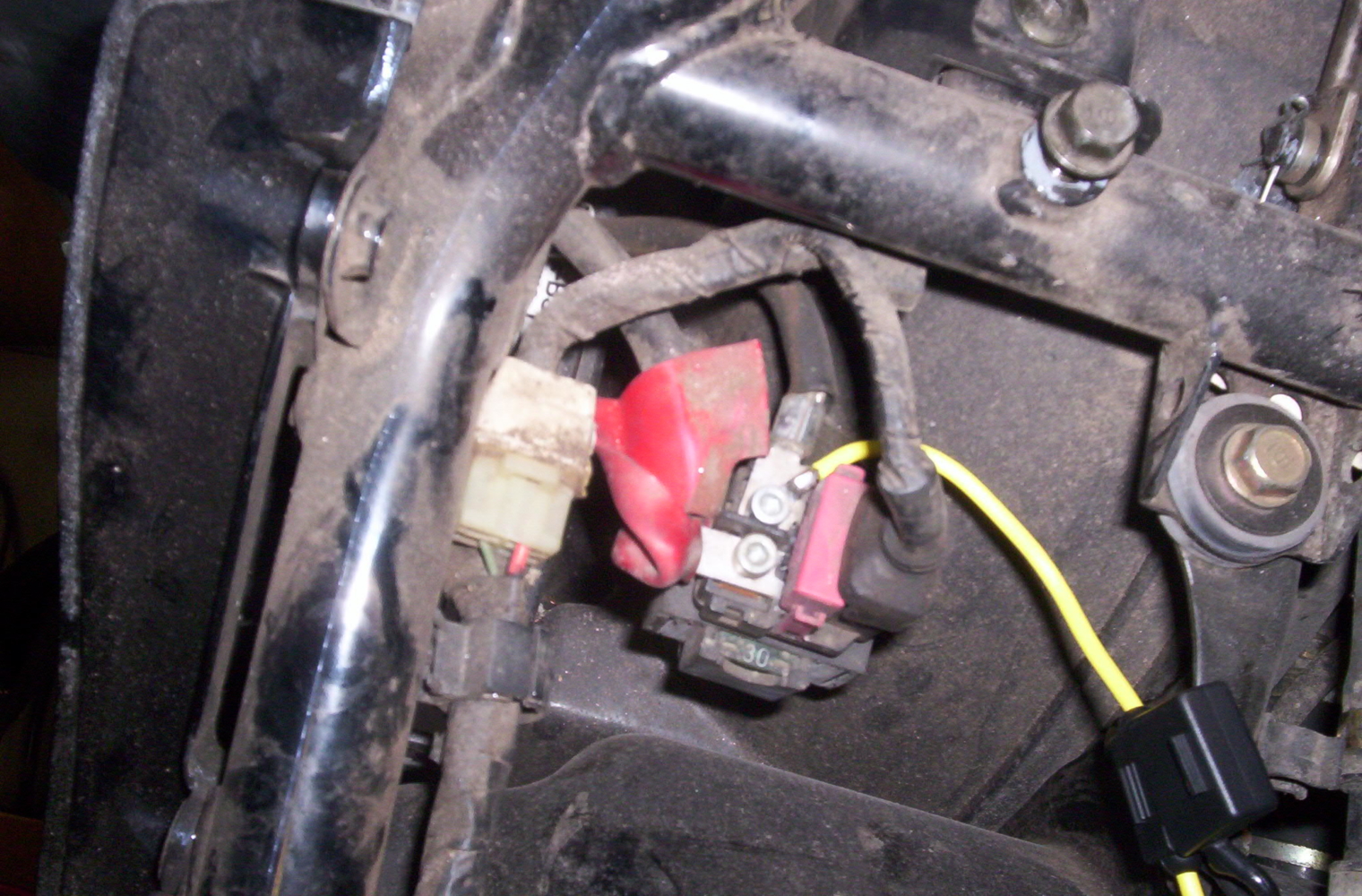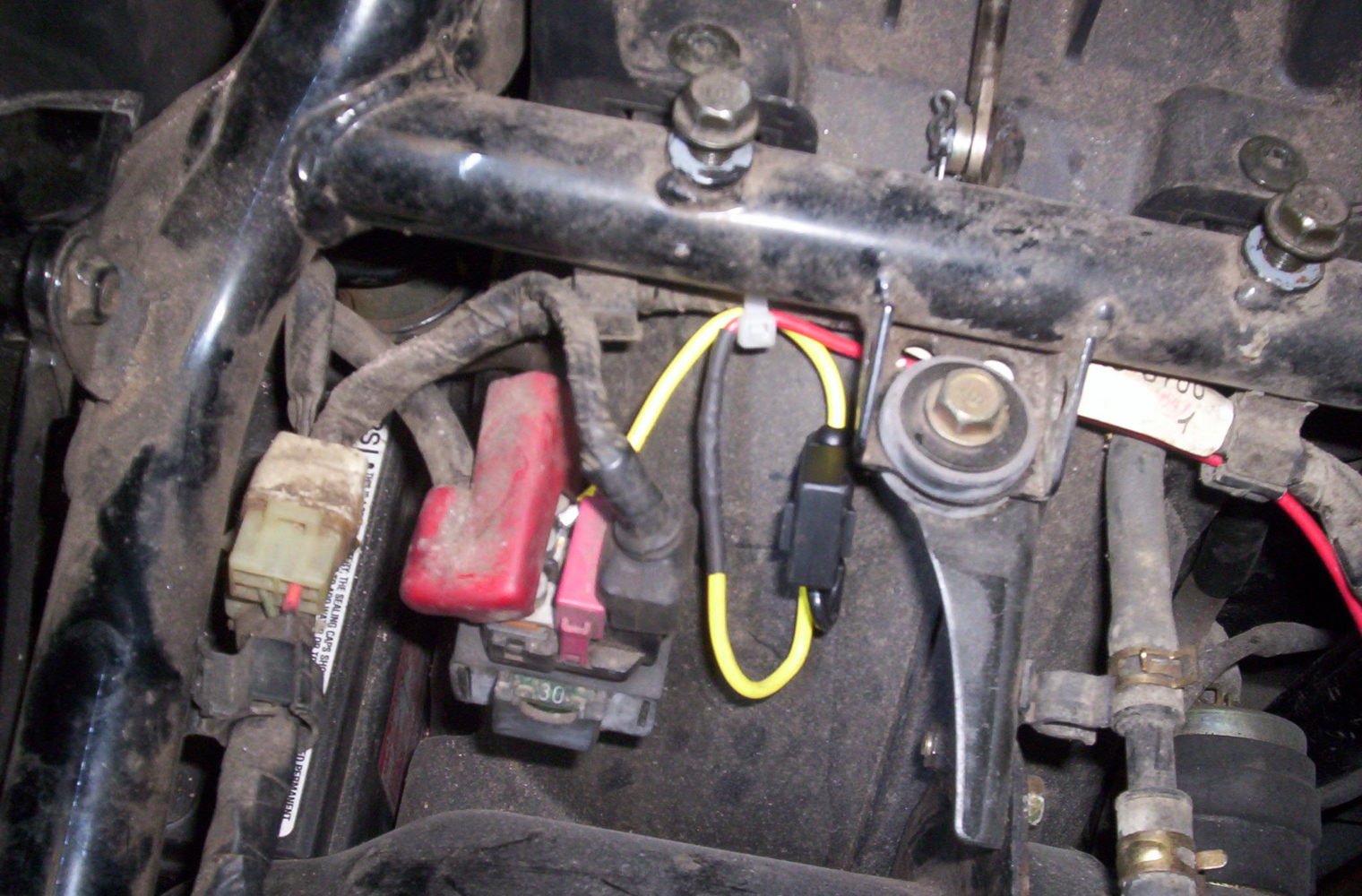The Honda Pacific Coast PC800 came with an excellent OEM toolkit that was in every bike’s trunk straight from the factory. Most bikes still have their toolkits in a little vinyl bag somewhere in the trunk although a few bikes have lost the kit.
Before you set off on your next ride, it’s a good idea to check through your toolkit and verify that you have all of the major tools. And be especially sure that when you replace the spark plugs, you use a genuine Hondaline spark plug tool so you don’t damage the engine. There are some stories back in the archives of the iPCRC when people tried using automotive parts store spark plug tools and cracked the engine!
Dean W. from both the iPCRC and the Facebook Group recently posted a great photo of his 1998 PC800’s toolkit and a description of the tools. If you want to verify what tools you have match what tools you should have, this is a photo and list. Just about every single tool you’ll ever need to work on the bike was in that little toolkit.
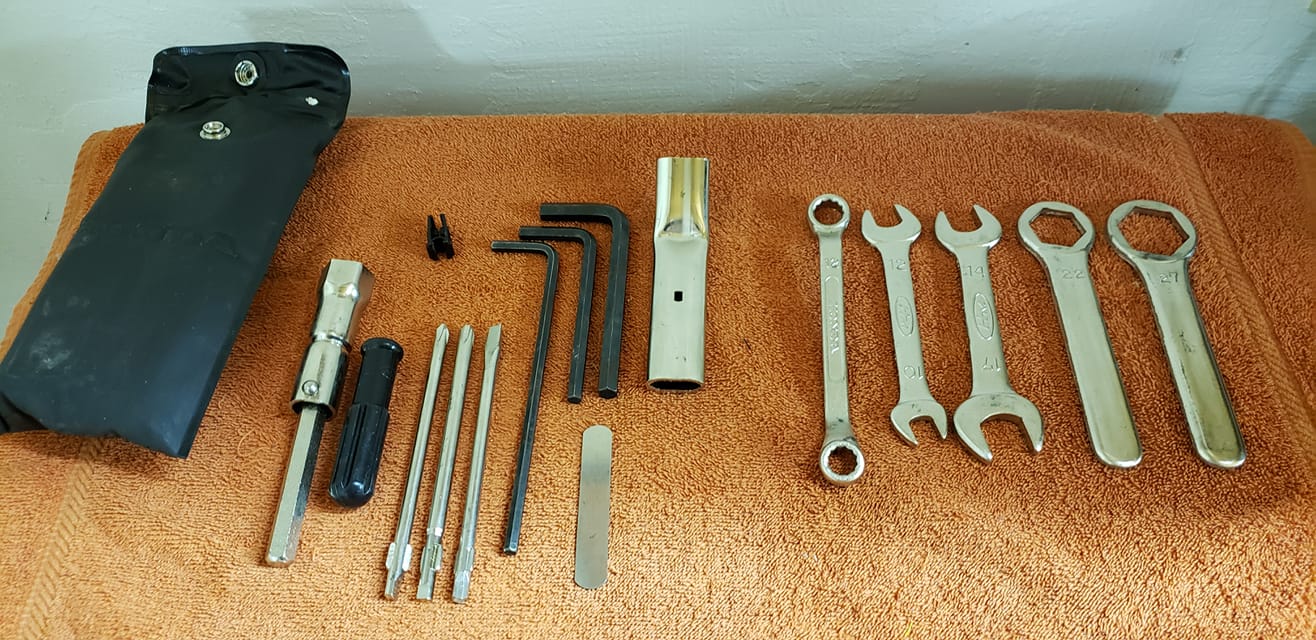
Here are the contents of the original tool kit from my 98 PC. The wrenches are at the right, and consist of an offset closed end wrench in 10mm and 12mm, an open end 10/12, an open end 14/17, and the single closed end wrenches are 22mm and 27mm.
Dean W.
The screwdrivers are a small JIS and a large JIS, and a flat blade. The feeler gauge is marked 0.7.
The long Allen wrench is unmarked, but the shorter, larger ones are 6mm and 8mm.
The only other two tools are the shock preload adjuster and the thin wall spark plug wrench.
I recently went through two toolkits that I came into possession of over the years and noticed a few odds and ends missing. However, most of it is there.
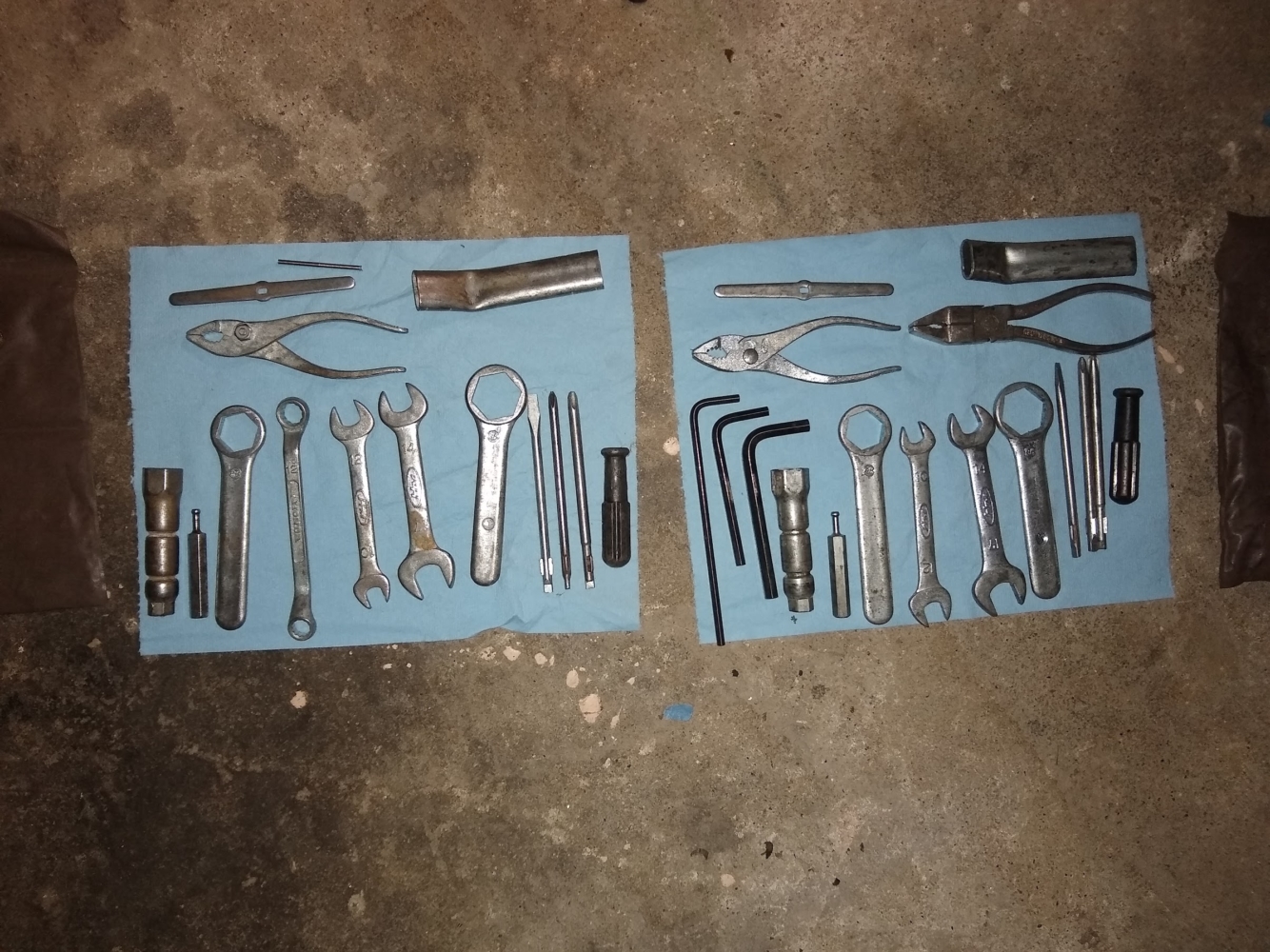
I recently decided to take both out and see what they contain. It’s interesting how neither kit is complete. Both are missing #6 (the box wrench that looks like didn’t come with the 1989 kits), #1 (the fuse puller), and #4 (the gauge feeler). The kit on the right is missing #13 (the eye wrench) but has a bonus pair of pliers. The kit on the left is missing #9, 10, 12 (the allen wrenches) but appears to have a bonus precision ground pin (upper center).
This is the first time I’ve bothered to inventory my tool kits. Interesting to see what they have and what they don’t have. I think I might combine the kits together into one kit that has everything I can muster and leave the second kit at home with my spare parts.
The full parts list for the tool kit is available at Grid Number H8 in the parts microfiche.
Note that there are some differences between model years. However any reasonably complete toolkit is all that you need.
In case you are looking for a spark plug tool, there are four different part numbers that are all interchangeable as Honda slightly changed the design over the years. The last part number occasionally can be found in new old stock on eBay and elsewhere. There may be newer part numbers that your local Honda dealership can identify as well.
89216-mr5-000
89216-mr5-870
89216-mr5-830
89216-my1-000
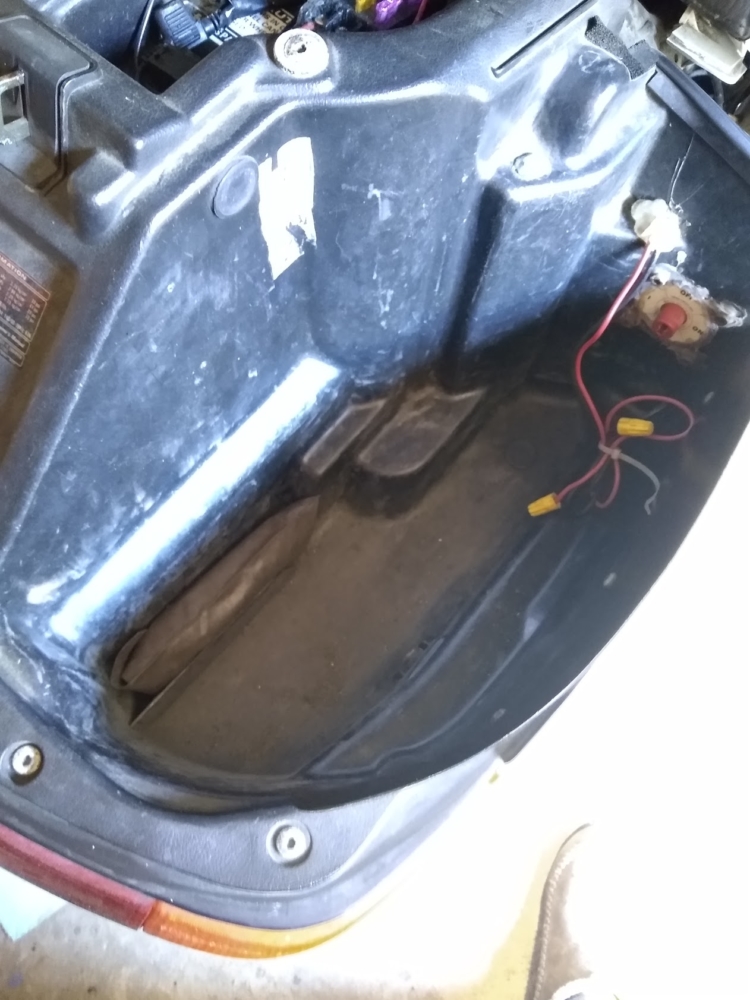
The toolkit lives in the right trunk compartment right next to the wheel well where, at least in my 1989 model year bike, there is a little plastic fin to help corral it in place. I generally try to have the flap on the toolkit pouch pointed toward the rear of the bike to help contain everything.

